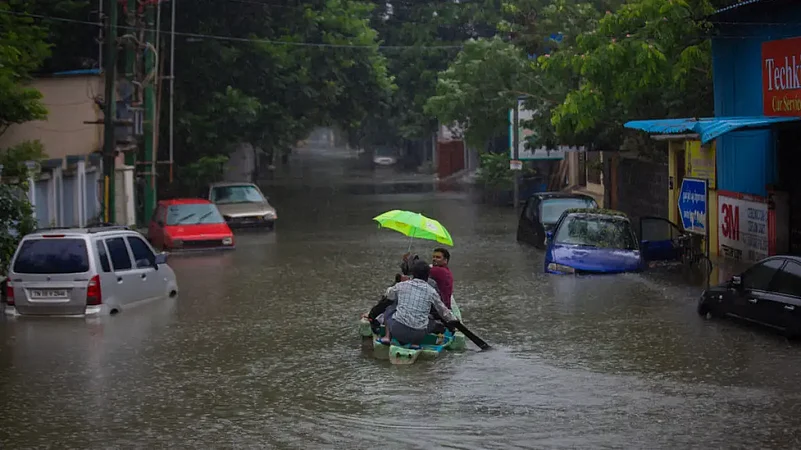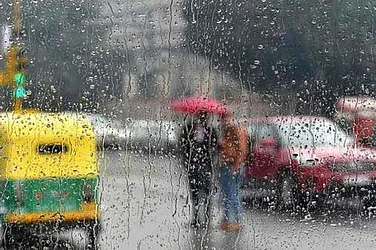The Safdarjung Observatory, one of Delhi's primary weather stations, recorded 189.6 mm of rainfall between June 1 and July 22, which is less than normal (201 mm). But it didn’t change the picture. Every time it rains, water-logging and subsequent traffic snarl for hours have become a frequent phenomenon.
This is not just the case in Delhi. Other cities like Mumbai, Hyderabad, Chennai, and Gurugram, too, come to a standstill whenever it rains. All these cities face urban flooding during the monsoons. Unlike rural floods, urban flooding is caused by untrammelled urbanisation, rather than just higher precipitation.
When the amount of precipitation increases, it causes bigger floods. In the 2020 flood in Hyderabad, thousands of houses were submerged and over 50 people lost their lives. The 2015 Chennai flood is a stark reminder of how rapid urbanisation is making cities prone to urban floods.
Floods can create havoc even when the amount of precipitation is less than which usually causes flooding. Chennai, which is a water-scarce city, has continuously witnessed depletion of its water table. Experts say flooding in urban and peri-urban areas are happening due to unplanned waste dumping and continuous disregard for natural recharge structures like ponds, wetlands, and tanks. The situation is similar in every city beset with unplanned development, mindless construction.
Floods are a result of both meteorological —rainfall frequency and intensity, storms, temperature— and hydrological factors — groundwater levels, extent of impervious surface). When combined with anthropogenic factors in urban centres, they are classified as urban floods. Anthropogenic factors like land-use changes, exploitation of floodplains by construction and similar activities, poor solid waste management and destruction of drainage, complicate the system.
A report by World Meteorological Organisation on urban floods says it is obvious that the big impact of urban floods, like inundation and collapse of structures, get noticed, but “less obvious are the backup of sewage into homes and buildings and the release of untreated sewage from damaged treatment plants. In addition, hazardous chemicals and fuels may be spread by flood waters from damaged production facilities or storage areas, or the flood may even float off the containers themselves to lodge in someone else’s backyard".
The report further adds, “Both untreated sewage and toxic chemicals can pose significant threats to public health and the water supply.”
For lower income groups, another challenge is the ability to earn a livelihood, which gets directly affected by urban flooding. It shows how urban poor are at more risk.
Nevertheless, the National Disaster Management Authority (NDMA) identifies that the Indian weather pattern is uncertain. It notes, “A special feature in India is that we have heavy rainfall during monsoons. There are other weather systems also that bring in a lot of rain. Storm surges can also affect coastal cities/towns. Sudden release (or failure to release) of water from dams can also have a severe impact. In addition, the urban heat-island effect has resulted in an increase in rainfall over urban areas.”
The uncertainties of India’s rainfall pattern require a more proactive approach from Indian authorities to tackle urban flooding.





















